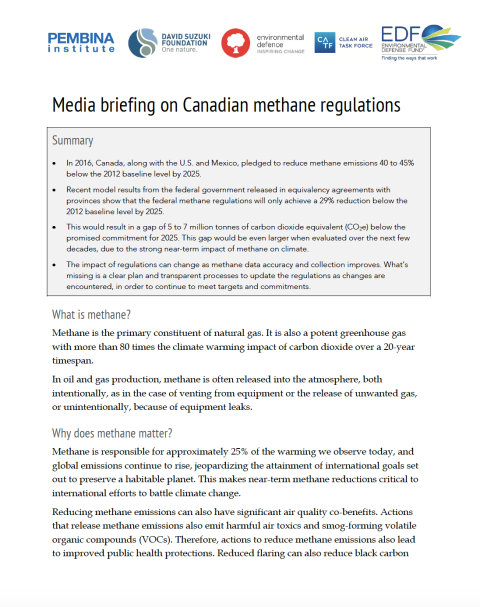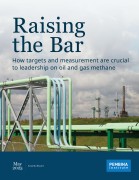Methane is the primary constituent of natural gas. It is also a potent greenhouse gas with more than 80 times the climate warming impact of carbon dioxide over a 20-year timespan.
In oil and gas production, methane is often released into the atmosphere, both intentionally, as in the case of venting from equipment or the release of unwanted gas, or unintentionally, because of equipment leaks.
This primer was created to help media understand the background of methane regulations in Canada, provincial equivalency and issues that arise as data is updated.
Download the primer, or read a summary below.
Summary
- In 2016, Canada, along with the U.S. and Mexico, pledged to reduce methane emissions 40 to 45% below the 2012 baseline level by 2025.
- Recent model results from the federal government, released in equivalency agreements with provinces, show that the federal methane regulations will only achieve a 29% reduction below the 2012 baseline level by 2025.
- This would result in a gap of 5 to 7 million tonnes of carbon dioxide equivalent (CO2e) below the promised commitment for 2025. This gap would be even larger when evaluated over the next few decades, due to the strong near-term impact of methane on climate.
- The impact of regulations can change as methane data accuracy and collection improves. What’s missing is a clear plan and transparent processes to update the regulations as changes are encountered, in order to continue to meet targets and commitments.






